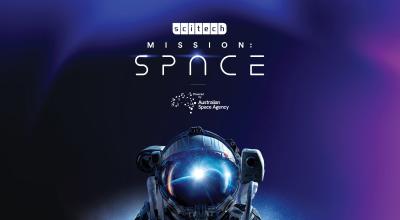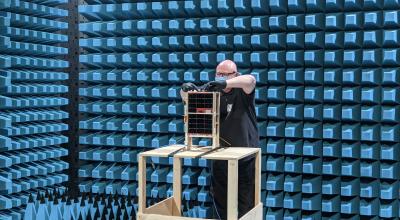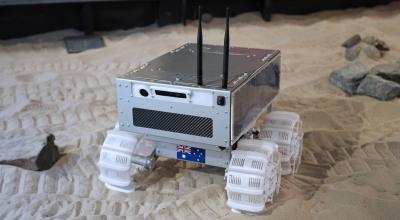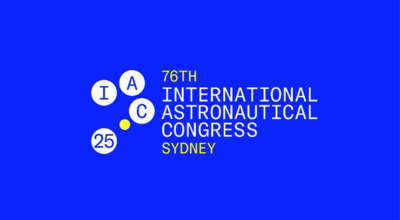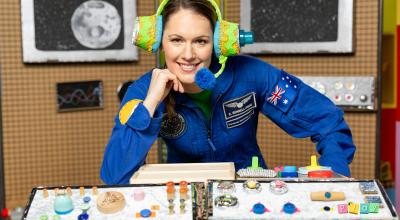The Australian Space Agency signed a Memorandum of Understanding with the Tasmanian Government, which draws on the support of Tasmania’s space capabilities including space medicine, ground stations and tracking facilities.
Read the full statement
The Commonwealth of Australia as represented by the Australian Space Agency part of the Department of Industry, Innovation and Science (‘the Agency’);
and
The Crown in right of Tasmania as represented by the Department of State Growth (‘the Department of State Growth’);
Hereinafter referred to individually as “Participant” or collectively as “Participants”,
Recitals:
DESIRE TO BUILD on the co-operation already established between the Participants;
RECOGNISING the wishes of the Participants to mutually grow the size, scope, capability and commercial sustainability of Australia’s national space sector;
CONSIDERING the positive contribution that cooperation in supporting the development of infrastructure, science, research, technology, services and applications will bring to all industry organisations as well as academic and research institutions across the space sector;
REFLECTING that the Australian Civil Space Strategy 2019-2028 is a framework for the development and growth of the Australian space industry over ten years; underpinned by four strategic pillars: International; National; Responsible; and Inspire. Under these pillars the strategy endeavours to help realise opportunities and address challenges by opening doors internationally; increasing national space capability; promoting responsible regulation, risk and space culture; and building the future workforce. The Strategy sets a path for the Agency to triple the size of Australia’s space sector to $12 billion and create another 20,000 jobs by 2030;
RECOGNISING that the Agency’s purpose is to transform and grow a globally respected Australian space industry that lifts the broader economy, inspires and improves the lives of Australians – underpinned by strong international and national engagement;
RECALLING that the Agency has seven National Civil Space Priority Areas including communications technologies and services; position, navigation and timing infrastructure; space situational awareness and debris monitoring; leapfrog research and development; Earth observation services; robotics and automation on Earth and in space; and access to space;
RECALLING that the Agency is responsible for whole-of-government coordination of civil space matters and is the primary source of advice to the Australian Government on civil space policy including: providing national policy and strategic advice on the civil space sector; coordinating Australia’s domestic civil space sector activities; supporting the growth of Australia’s space industry and the use of space across the broader economy; leading international civil space engagement; administering space activities legislation and delivering on our international obligations; and inspiring the Australian community and the next generation of space entrepreneurs;
RECOGNISING the Department of State Growth is committed to work collaboratively with the Agency to seek the growth and development of the space sector in Tasmania and Australia;
RECOGNISING that the Department of State Growth works to facilitate, support and grow economic prosperity and value for Tasmania and Australia by encouraging investment attraction and engagement with universities, research, industry and other relevant commercial participants for the benefit of Tasmanian and the broader ecosystem to facilitate and support a sustainable space sector and industry;
RECOGNISING Tasmania’s continuing history in space and related infrastructure, in particular the University of Tasmania’s (UTAS) capabilities and resources through the Centre for Antarctic, Remote and Maritime Medicine (CARMM) in remote, extreme environment medicine and space medicine (as demonstrated by UTAS and Australasian Society of Aerospace Medicine’s memorandum of understanding), ground stations and tracking technologies (UTAS’s radio and optical telescope infrastructure), Earth observation data processing and services integration capabilities; Tasmanian human research and education capability also demonstrated by the CARMM collaboration with the Australian Antarctic Division (AAD), UTAS and the Royal Hobart Hospital’s hyperbaric/hypobaric and related infrastructure. Also noting the AAD’s longstanding relationship with NASA, since 1993, utilising Antarctica as a space analogue on human research and operational medicine.
THE PARTICIPANTS HAVE REACHED THE FOLLOWING UNDERSTANDINGS:
-
Purpose
1.1The purpose of this Memorandum of Understanding (‘MOU’) is to:
- provide a framework for mutual understanding between the Participants regarding common areas of interest and reviewing major areas of future cooperation to develop the space industry;
- facilitate the interchange of information in areas of mutual interest;
- nominate relevant points of contact for both Participants.
-
Status of this MOU
- The Participants agree that this MOU is not intended to create any binding legal partnership between the Participants, nor are its provisions intended to give rise to legal rights, obligations or liabilities on the part of either Participant.
- Nothing in this MOU creates or implies any obligation on the part of either Participant to enter into any contract, agreement, commitment or other arrangement whatsoever in relation to the subject matter of this MOU.
- Nothing in this MOU requires a Participant to cooperate, facilitate or make any contribution concerning the matters the subject of this MOU in any way contrary to its own interests or requirements.
-
Areas of Cooperation
3.1Subject to the laws and regulations applicable to them, the Participants, through consultation, will decide upon the specific items and scope of cooperation within the framework of this MOU. The proposed activities the subject of this MOU are as follows:
- Participants will seek to facilitate cooperation as appropriate in Tasmanian and Australian national space sectors, including:
- working with the Department of State Growth and relevant Tasmanian-based organisations (such as UTAS and CARMM) to facilitate and investigate opportunities in several (but not limited to) focused sectors including:
- remote and space medicine, space life sciences research, leadership, education and training and operational remote medical support;
- space communication technologies and services including optical;
- data processing and Earth observation
- integrated services including mission support services for deep space and other missions;
- positioning, navigation and timing infrastructure;
- space situational awareness and debris monitoring.
- collaborating with the Tasmanian Government and relevant Tasmanian based organisations to promote Tasmania’s growing space and supporting infrastructure and international networks to facilitate the growth of the space sector including in relation to:
- launching infrastructure and facilities including satellite/pseudo satellite launch sites;
- development of critical infrastructure such as fit-for-purpose digital infrastructure to enable space industry investment attraction and growth;
- increasing investment in capability and relevance of Tasmania’s space radio, optical, tracking and other relevant infrastructure to meet emerging international project requirements relevant to Tasmania’s participation.
- Promoting and facilitating Tasmanian businesses, industry, research and academia participation in international space projects and missions including in relation to:
- remote operations, robotics and mining, artificial intelligence, internet of things;
- space engineering and small satellite development;
- the intersection of space activities with fields such as cybersecurity, astronomy, and defence science.
- supporting the development of space skills and workforce capability
- supporting and promoting nationally and internationally, an emerging Space start-up ecosystem in Tasmania
- building and strengthening relationships with international space agencies, including activities relating to current NASA projects
- gaining greater awareness on geographical relevance/advantages of Tasmania in relation to global space industry with special relevance to short/medium term major global projects
-
Implementation
4.1The Participants will arrange meetings by mutual consent to review progress on this MOU. The persons nominated by the Participants as responsible for overseeing the implementation of this MOU are as follows:
or such other person notified to the other Participant.
4.2The Participants acknowledge that the State and Territories Space Coordination Committee will be used as the forum to review the Agency’s and all States and Territories progress to supporting the growth of the national space capability.
-
Confidentiality
- Subject to this clause 5, each Participant must keep confidential, and must not publish or disclose to a third party, without the written consent of the other Participant, any information and/or data relating to the operations, business, property or affairs of a Participant which is of a confidential nature (‘Confidential Information’).
- Nothing in clause 5.1 prevents:
- a Minister from publishing or disclosing Confidential Information if that Minister is required to disclose that Confidential Information to Parliament in order to properly discharge that Minister’s duties or responsibilities as a Minister of the Crown or Commonwealth.
- a Participant from publishing or disclosing the Confidential Information of that Participant.
- a Participant from publishing or disclosing the Confidential Information of the other Participant to the extent that the publication or disclosure
- is required by law or lawful order of any Government Body having authority over a Participant
- is necessary to enable that Participant to enjoy the benefit of, or enforce obligations arising under, this MOU or
- is made on a confidential basis to the professional advisers of such Participant for the purpose of obtaining professional advice in relation to this MOU or otherwise for the purpose of consulting such professional advisers.
-
Duration and termination
6.1This MOU will come into effect on the date of signature by both Participants and will continue in operation until termination by either Participant giving one months’ written notice to the other.
-
Miscellaneous
7.1No partnership or agency
- Nothing contained or implied in this MOU will:
- constitute, or be taken to constitute, a Participant to be the partner, agent or legal representative of another Participant for any purpose
- create, or be taken to create, a partnership or joint venture or
- create, or be taken to create, an agency or trust.
- A Participant must not represent or hold itself out to be a partner, joint venturer, agent or representative of another Participant.
7.2Amendment
This MOU may only be amended or supplemented in writing signed by the Participants.
7.3Disclosure
- Despite any confidentiality or intellectual property right subsisting in this MOU, a Participant may publish all or any part of this MOU without reference to another Participant.
- Nothing in this clause derogates from a Participant's obligations under the Personal Information Protection Act 2004 (Tas) or the Privacy Act 1988 (Cwlth).
7.4No interference with executive duties or powers
Nothing in this MOU is intended to prevent, is to be taken to prevent, or prevents, the free exercise by the Governor of Tasmania, by any member of the Tasmanian Executive Council, or by any Minister of the Crown, of any duties or authorities of his or her office.
Executed by the Participants as a non-legally binding MOU.
Signed at the Tasmania Parliament House on 25 September 2019.

